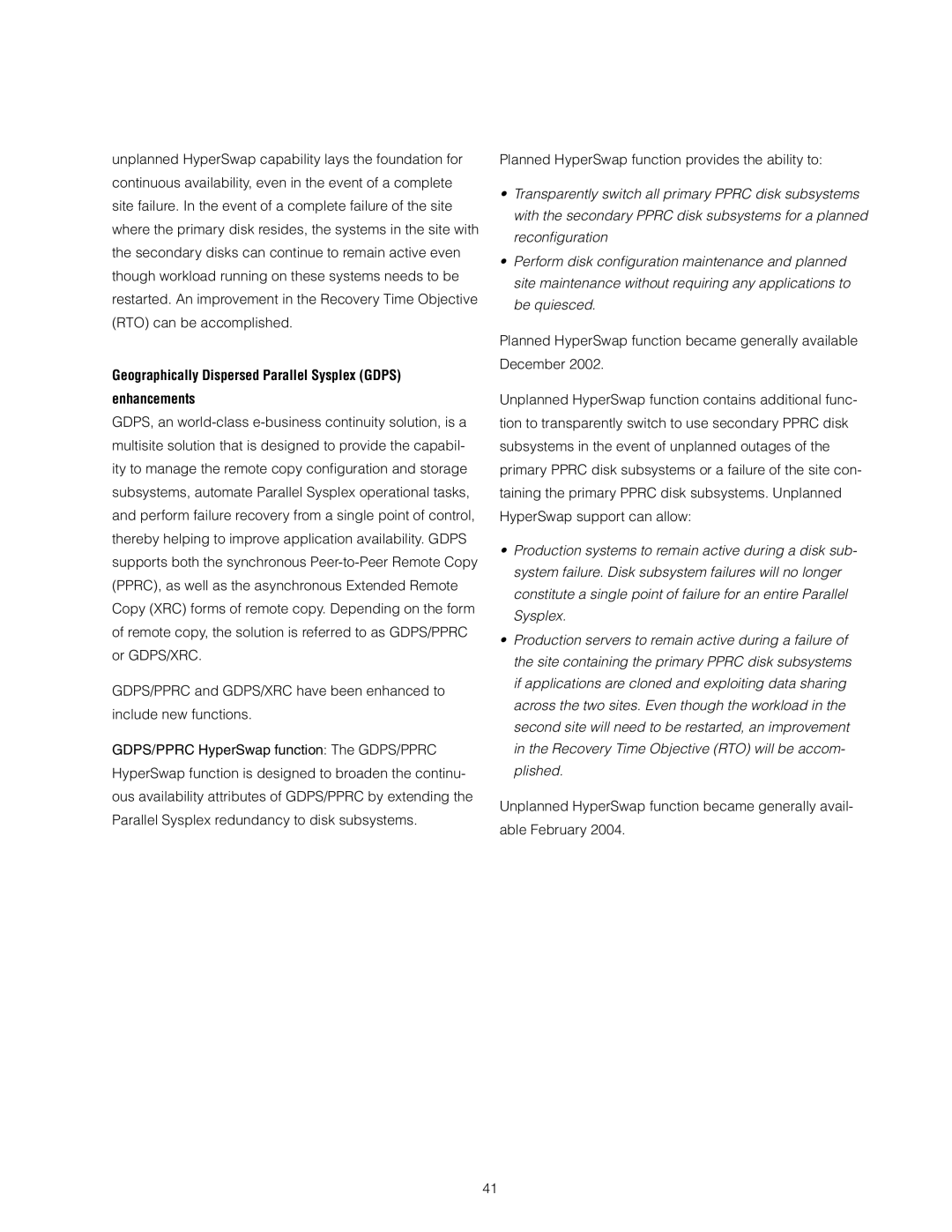unplanned HyperSwap capability lays the foundation for continuous availability, even in the event of a complete site failure. In the event of a complete failure of the site where the primary disk resides, the systems in the site with the secondary disks can continue to remain active even though workload running on these systems needs to be restarted. An improvement in the Recovery Time Objective (RTO) can be accomplished.
Geographically Dispersed Parallel Sysplex (GDPS)
enhancements
GDPS, an
GDPS/PPRC and GDPS/XRC have been enhanced to include new functions.
GDPS/PPRC HyperSwap function: The GDPS/PPRC HyperSwap function is designed to broaden the continu- ous availability attributes of GDPS/PPRC by extending the Parallel Sysplex redundancy to disk subsystems.
Planned HyperSwap function provides the ability to:
•Transparently switch all primary PPRC disk subsystems with the secondary PPRC disk subsystems for a planned reconfi guration
•Perform disk confi guration maintenance and planned site maintenance without requiring any applications to be quiesced.
Planned HyperSwap function became generally available December 2002.
Unplanned HyperSwap function contains additional func- tion to transparently switch to use secondary PPRC disk subsystems in the event of unplanned outages of the primary PPRC disk subsystems or a failure of the site con- taining the primary PPRC disk subsystems. Unplanned HyperSwap support can allow:
•Production systems to remain active during a disk sub- system failure. Disk subsystem failures will no longer constitute a single point of failure for an entire Parallel Sysplex.
•Production servers to remain active during a failure of the site containing the primary PPRC disk subsystems if applications are cloned and exploiting data sharing across the two sites. Even though the workload in the second site will need to be restarted, an improvement in the Recovery Time Objective (RTO) will be accom- plished.
Unplanned HyperSwap function became generally avail- able February 2004.
41
